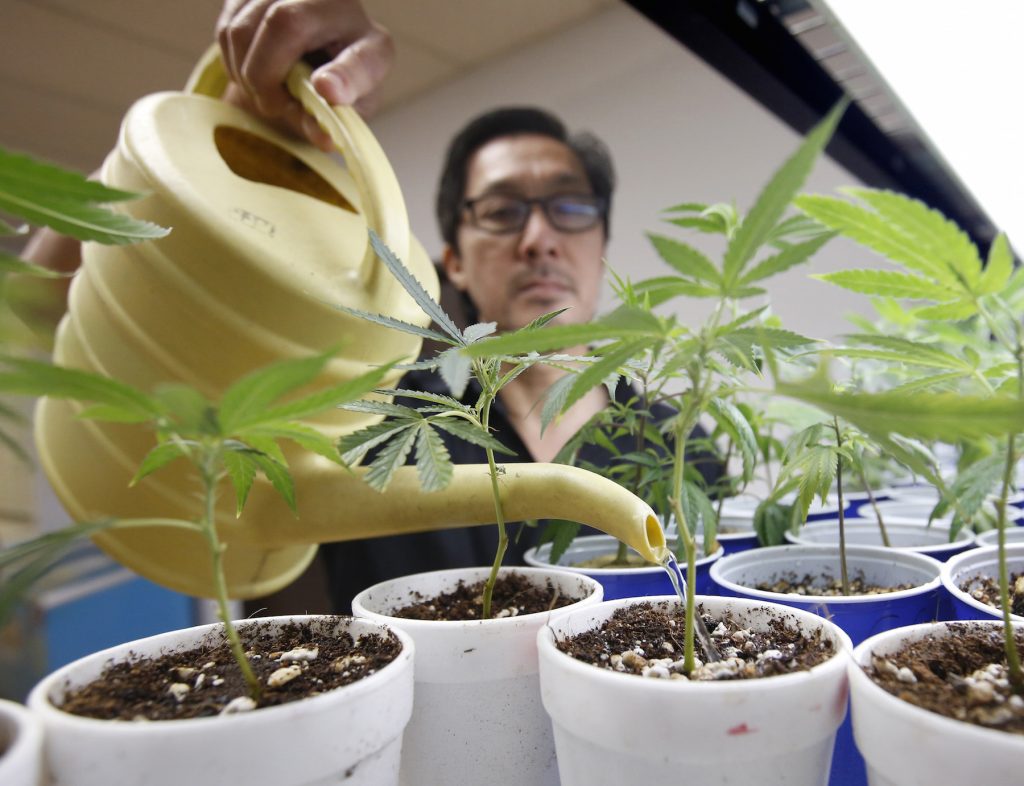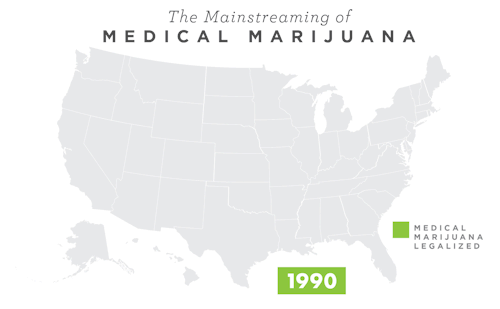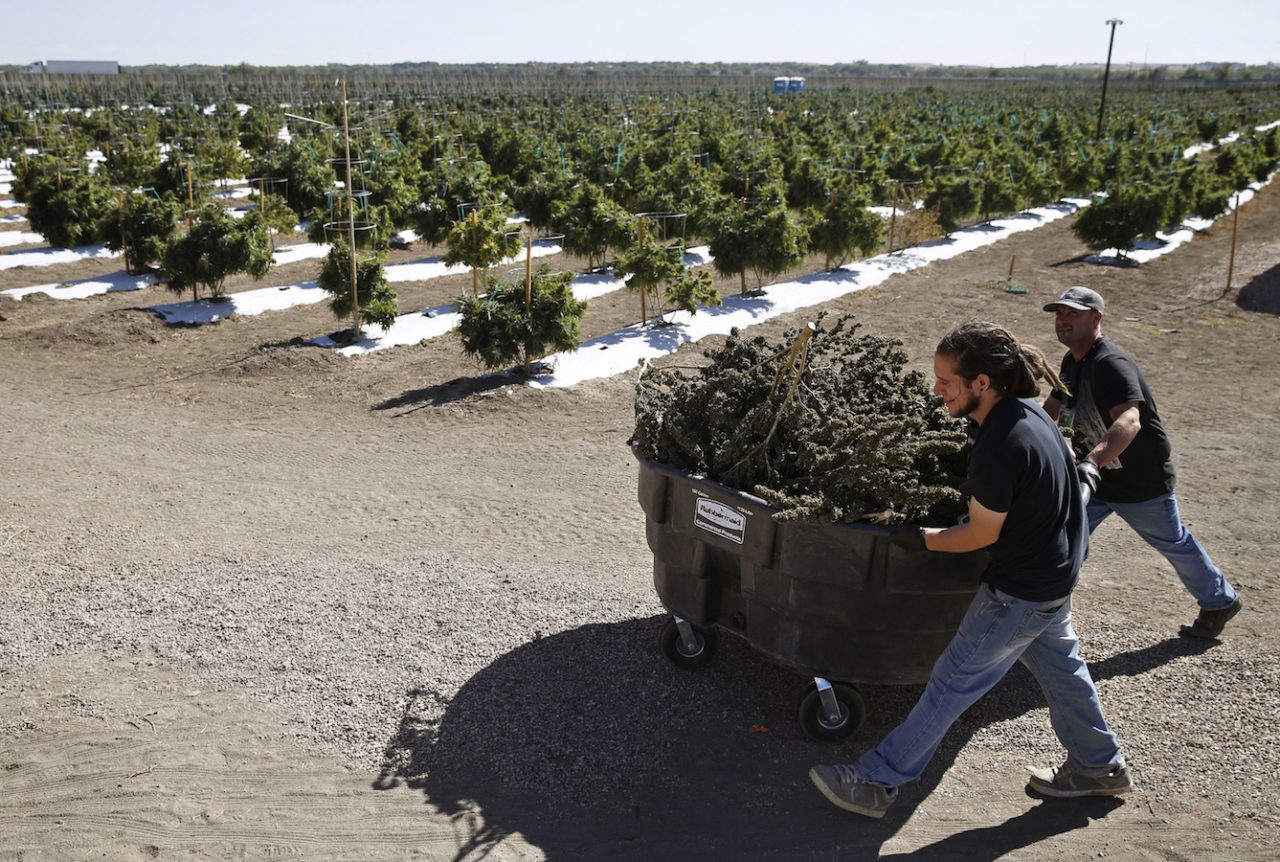
Looks like the ‘weed economy’ is here to stay
Besides the whole who's-going-to-be-the-next-prez thing, Americans also voted on the 'Adult Use of Marijuana Act' last week. As of November 9th, California, Nevada, Massachusetts and Maine are pro-recreational marijuana, and four more states have legalized medical use. It looks like weed could soon become just another thing we buy and sell – but not everyone is excited about what that might look like.
So what exactly are the new rules?
As of Tuesday:
- Anyone over 21 can have 1 ounce (about 28 grams) of marijuana, or 8 grams of concentrated hash
- Adults can grow up to 6 plants at home
- People already in jail for marijuana crimes can be ‘resentenced’ under the new law
What you still can’t do? Actually buy weed. Technically, buying and selling marijuana is still illegal under the new system, meaning you have to grow your own or ‘get it from a friend’.
But by January 1st 2018, new regulations still being drafted mean the ‘pot economy’ will be able to come out of the shadows. Toking in public will still be against the rules, but other things might be given the go-ahead, such as:
- Allowing people to apply for licenses to grow and sell weed
- Giving cities the power to add extra rules, implement ‘social consumption’ in Amsterdam-like coffeeshops, or ban weed sales entirely
- Placing big taxes on weed sales

Bring on the taxes! Wait, what?
It’s not every day that people get excited about big taxes. But supporters of legalization love to talk about all the money the government can make from taxing weed. In Colorado, one of the first states to ‘legalize it’, marijuana now brings in almost twice as much tax money as alcohol—most of which goes into the education budget.
California is expecting weed to bring in around $1 billion a year. In the context of the state budget—California brings in around $110 billion a year in taxes—it’s not exactly a game changer. So California is putting most of the money back into marijuana-related things like research, law enforcement and public health, and giving most of the rest to youth programs.
People are talking about California as a tipping point state; if they can successfully manage legal weed on a large scale, it will become a lot harder to argue against it in other states. And if the US really commits to legal weed, it might open the door for other countries to do the same.
California has a giant economy—if it were a country it would have the 6th biggest economy in the world. West Coast weed is about to be big business. And big business is pretty hard to stop.

Wait a minute, did you say big business? Not dank.
Within the pro-weed community there were actually some big disagreements over Prop 64.
The fear is that once big money gets involved, a ‘Big Weed’ industry could emerge and outcompete the small farmers who currently grow for the medical market. Some growers hope to be able to market their product as ‘craft weed’, but others think the law will basically end their way of life.
Farmers aren’t the only ones concerned about Big Weed. Public health groups worry that a powerful weed industry could act similarly to Big Tobacco and Big Alcohol (at their worst) by using political power to block new health and safety rules.

Some people also aren’t super comfortable with big companies having an incentive to sell as much weed as possible. The California law has rules against targeting weed advertisements at young people, but if beer commercials during the Super Bowl (which is watched by millions of children) are any indication, this is a slippery rule to enforce.
It’s not often that we get to decide how to build an economy around something totally new. What’s it going to look like?
Right now states like California are building weed economies that look a lot like most alcohol economies; high taxes and fairly strict regulations, but dominated by big companies trying to make a profit.
There are other ways to structure a weed economy. Farm sizes could be limited or sales kept to small co-ops. Retail stores could be local-only to avoid chain-dispensaries. All weed sales could be made non-profit. The whole thing could be state-owned.
There are costs and benefits to all of these options. It's also a question of values – whether people think it's okay to profit off the drug, where we draw the line between recreational and medical marijuana, who we think is responsible for monitoring how much of it people take.
There's clearly still issues to solve in how we're going to deal with this unchartered territory – but 60% of Americans support legalizing weed, including 77% of people under 35. With public support that high, it looks like the weed economy is only going to grow (pardon the pun... #sorrynotsorry).



